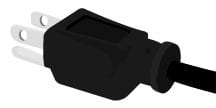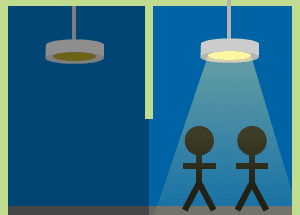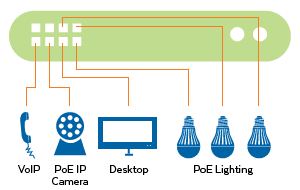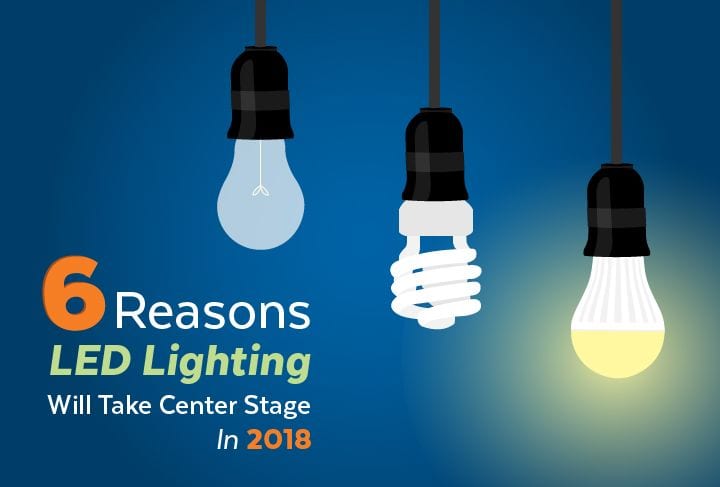The LED lighting market, near 40 percent saturation as of this writing, is expected to reach 61 percent by 2020. That means 61 percent of all lighting is expected to be LED right when the Internet of Things (IoT) hits its 20 billion connected device milestone.
Gartner reports we’re at roughly 11.2 billion now.
It makes sense. From a purchasing perspective, LED bulbs last 20-25 times longer than a halogen, and 8-10 times longer than a typical CFL [corkscrew fluorescent]. Used 12 hours a day, a 50,000 bulb will last more than 11 years.
They cost more than other bulbs, true, but they produce healthier more natural qualities of light. And, when properly installed, they reduce the demands of electricity by 62 percent.
Let’s turn to the year before us and see why LED lighting will see exponential growth in 2018.
Factors In LED Lighting Growth for 2018
Though not necessarily new, they indicate larger technology trends. Simplicity and easy adoption are what people want. Consolidation and connection brings the IoT to life.
1. Power and data over single-layer infrastructure
Many of you read the announcement at the release of iPhone X [ten] of the wireless charging feature. As technology advances toward a fuller adoption of connectivity, it makes sense to reduce the requirements for powering and data sharing.
That capability already being developed in Ethernet, is now moving its way into other areas of technology.
2. Use of DC power
Direct current (DC) flows one way; alternating current oscillates back and forth.
Single-layer and DC power delivery characterize many Power over Ethernet [PoE] installations, including sensors, security cameras, and VoIP phone systems. You’ll see this trend expand as more device networks come online.
3. Ease of installation
Low-voltage devices do not require additional power outlets and are safe to install without the services of an electrician.

Since LED lighting is low power, you rarely need to calculate the load for an install. In case you are wondering how to calculate this, the formula is W = VA [watts = volts x amps]. If you had a 3-amp circuit at 110 volts, the results would be 330W.
For low voltage devices like POE, the current limiting system is built into the power supply.
4. Follows the latest IEEE 802.3 Ethernet standards
Tasked with saving money and providing a clear path forward, the IEEE Ethernet Working Group continues to publish their findings and information on current projects. They have strived for and achieved 2.5 and 5 Gbps speeds and are well on their way to 10.
Since lighting has become “smart” and is getting smarter, sensor capabilities in the installations allow organizations to save money, while lighting only areas that are occupied within a building.
 Automotive is another area ramping up with smart Ethernet.
Automotive is another area ramping up with smart Ethernet.
5. LED lighting may be reprogrammed and upgraded without significant costs
Because spaces change within office buildings due to staffing changes and business priorities, having the capability to change lighting function can save your client considerable time and money.
![]()
Manufacturers like CREE are constantly updating and innovating lighting designs. The Ethernet infrastructure supporting LED is highly responsive and adaptable to change.
6. LED systems can share network switches
The same ethernet switch provides network infrastructure for LED and other LANs. That can save time and money, especially for one-off installations. Lower financial investments and the plug and play dynamic of Ethernet is making LED a popular choice with decision makers.
What To Tell Your Customers About LED Lighting
As the market becomes saturated, bespoke products will begin to emerge. By bespoke, we mean customized designs for verticals, applications, and even customer specific requirements will differentiate LED lighting manufacturers.
- Smart lighting will become the norm as the IoT rolls out even further.
- LED will become mainstream.
- Automotive systems will become more and more Ethernet based.
That’s it for LED lighting at this juncture.
If you’d like some help choosing the right switch for your customer LED lighting installation, we’d be happy to help. You can message us here, or call if that’s more convenient for you.

